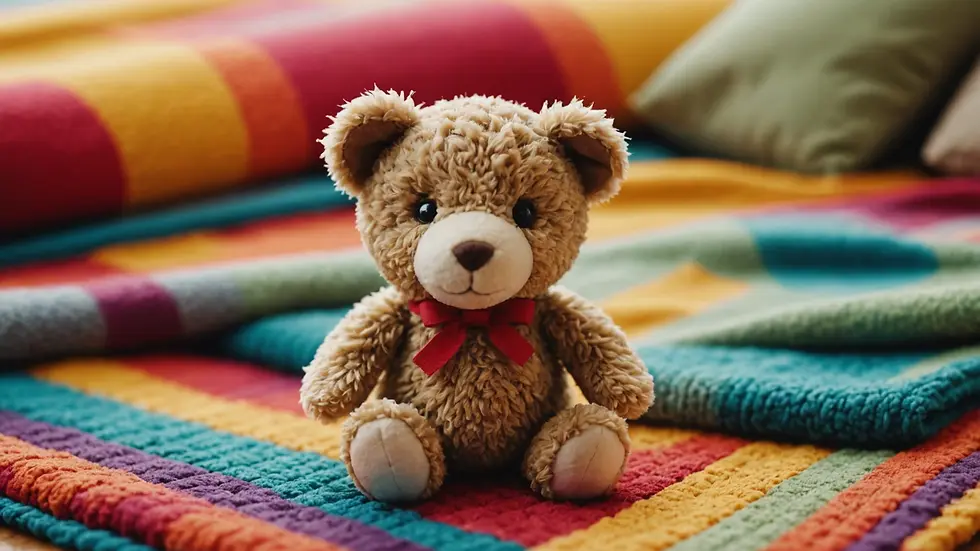Building Emotional Strength: Activities for Helping Grieving Children Navigate Loss
- Mariah Caldwell

- Feb 26
- 4 min read
Losing a loved one is a heart-wrenching experience, especially for children. Their emotions can range from deep sadness and confusion to anger and fear. Each reaction is valid and deserves acknowledgment. As caregivers, we must step in to support grieving children and help them build emotional strength. Engaging in specific activities can foster healthy coping mechanisms. These experiences allow youth to express their feelings and work through their grief in meaningful ways.
Recognizing the Value of Emotional Resilience
Emotional resilience is the ability to bounce back from tough situations. For children facing loss, cultivating this resilience is crucial. It helps them better adapt to their feelings and challenges, setting a strong foundation for their emotional health both now and in the future.
Studies show that children with high emotional resilience have a 70% better chance of coping effectively with trauma as they grow. Activities that encourage emotional expression can validate their feelings and support their recovery process.
Creative Expression Through Art
Art serves as a wonderful outlet for kids who may find it tough to express their emotions verbally. By encouraging children to engage in creative activities—like drawing, painting, or crafting—they can open up about their feelings on loss.
Art Activity: Emotion Wheel
Materials Needed: Colored paper, crayons or markers, scissors.
Instructions: Guide the child in creating an emotion wheel. They should divide a circular piece of paper into sections, each labeled with a different feeling (e.g., happy, sad, angry, confused). The child can illustrate each section with colors and images that represent those emotions.
This exercise helps establish a dialogue about feelings and illustrates how grief can lead to a range of emotions. For instance, a child might choose red to depict anger, while blue reflects sadness.
Writing as a Coping Mechanism
Writing allows children to process their thoughts and express their emotions safely. Many find comfort in journaling or storytelling, helping them articulate their grief and healing journey.
Writing Activity: Letters to Loved Ones
Materials Needed: Notebooks or loose-leaf paper, colored pens.
Instructions: Urge children to write letters to their deceased loved one. They might share what they miss most, memories they cherish, or even questions they wish they could ask.
If they feel comfortable, reading these letters aloud can further open discussions about emotions and memories, promoting emotional introspection. Statistics reveal that 60% of children who engage in expressive writing experience a decrease in grief symptoms over time.
Nature Walks to Promote Healing
Spending time in nature can significantly enhance emotional wellbeing. Nature walks offer children a calming environment, allowing them to reflect and connect with their feelings.
Nature Activity: Memory Walk
Materials Needed: A local park, beach, or serene natural area.
Instructions: Organize a memory walk where children bring a small stone or twig as a token representing their loved one. As they walk, encourage them to pause and share stories or memories linked to their loved one when they find a special spot.
This activity merges physical movement with emotional dialogue, creating an opportunity for healing. A study showed that children who engage in nature-based activities report a 40% increase in feelings of happiness and wellbeing.

Play-Based Activities
Play is a natural and effective way for kids to process their grief. It creates a sense of normalcy while allowing them to cope and heal.
Play Activity: Grief Play Kit
Materials Needed: Stuffed animals, figurines, or any toys the child enjoys.
Instructions: Create a grief play kit where children can use toys to role-play different scenarios involving their emotions about loss. They can act out stories that reflect their feelings, providing a safe space to confront their grief.
Imaginative play helps children externalize their feelings and gives adults insight into their inner world. Play therapy research shows that children who process grief through play demonstrate a 55% improvement in emotional understanding.
Mindfulness and Relaxation
Mindfulness can be transformative for children struggling through grief. These exercises teach them how to stay calm in emotional turbulence, empowering them to cope with their feelings.
Mindfulness Activity: Breathing Buddies
Materials Needed: A small stuffed animal.
Instructions: Have the child lie down with a "breathing buddy" resting on their belly. Instruct them to breathe in and out, observing how the buddy rises and falls with each breath. Encourage them to visualize calmness spreading through their body as they breathe.
Regular practice of this technique can help children manage anxiety and remain present. Research indicates that children who practice mindfulness experience up to a 50% reduction in anxiety levels related to grief.

Supporting Grieving Children
Navigating grief is a deeply personal journey. While children may have difficulty articulating their emotions, engaging in supportive activities builds a foundation for emotional resilience. By integrating various activities—art, writing, nature walks, play, and mindfulness—guardians can create a nurturing environment where grief is acknowledged in safe, constructive ways.
Encouraging these experiences equips children to handle loss better and establishes emotional roots that will help them in future challenges. By fostering resilience, we not only support healing but also lay the groundwork for a hopeful future.



Comments